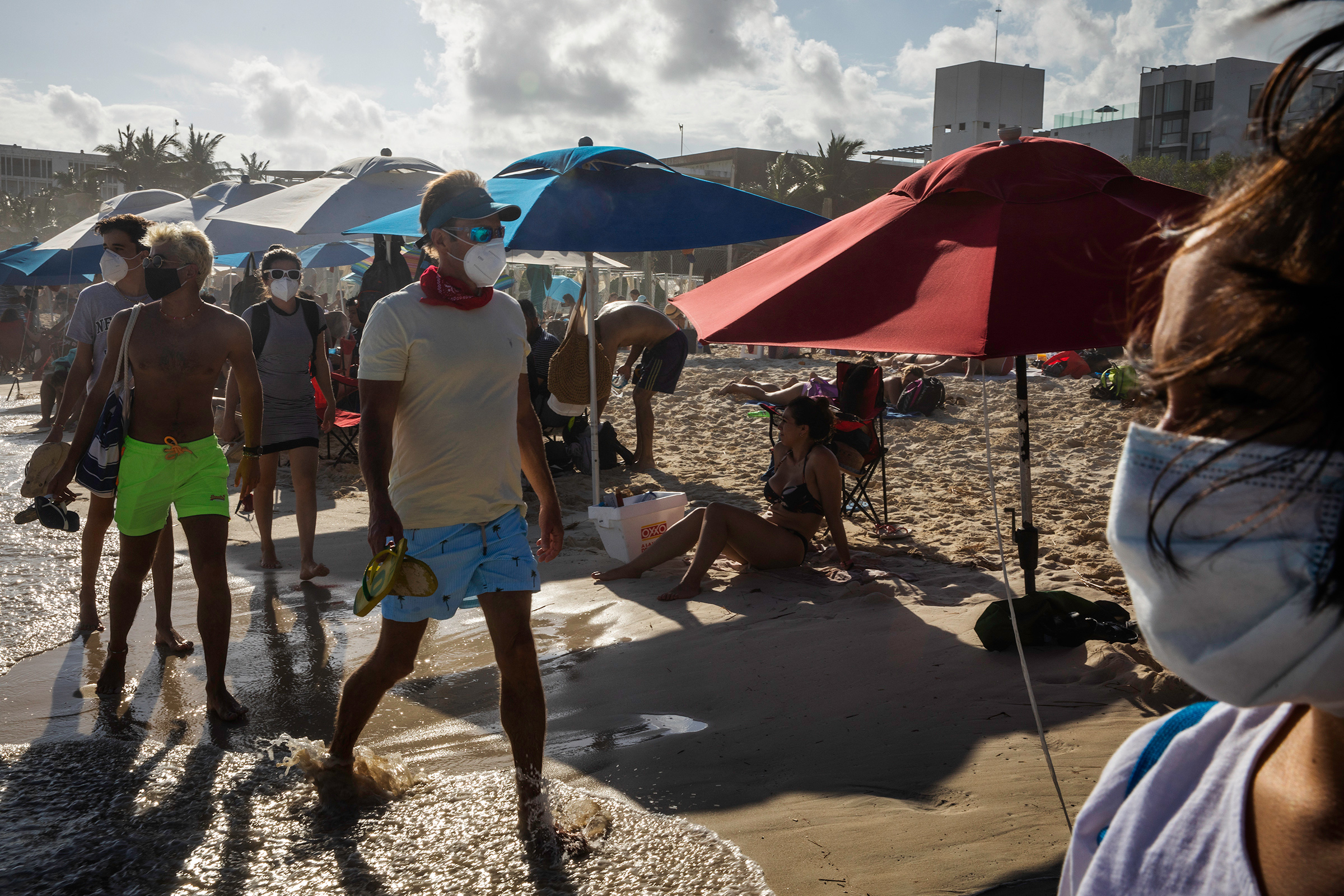Sitting on the soft white sand of the world-famous beach in Cancún, Mexico, the turquoise water lapping lazily at your feet as tourists jog maskless along the shore, you can almost imagine that the coronavirus pandemic never happened.
In the evening, masked waitresses in colorful, frilly dresses balance bottles of tequila on their heads and perform to “Baby Shark” at a tacky restaurant in Cancún’s nightlife district. With the lights of the Coco Bongo disco illuminating the night sky, tourists dance in open-air clubs while acrobats twirl above them, raining glitter down on a packed and maskless crowd.
But behind the pulsing music and pristine beaches lies an ominous reality. COVID-19 has infected some16,000 people in the state of Quintana Roo, which includes Cancún, claiming over 2,000 lives. Limited testing means actual numbers are likely far higher. And even as tourists begin flooding in, often escaping a raging pandemic back home, COVID-19 remains a crippling crisis for the waiters, housekeepers, chauffeurs and others here who depend on tourism, with many losing their jobs, their family or even their lives because of the deadly disease.
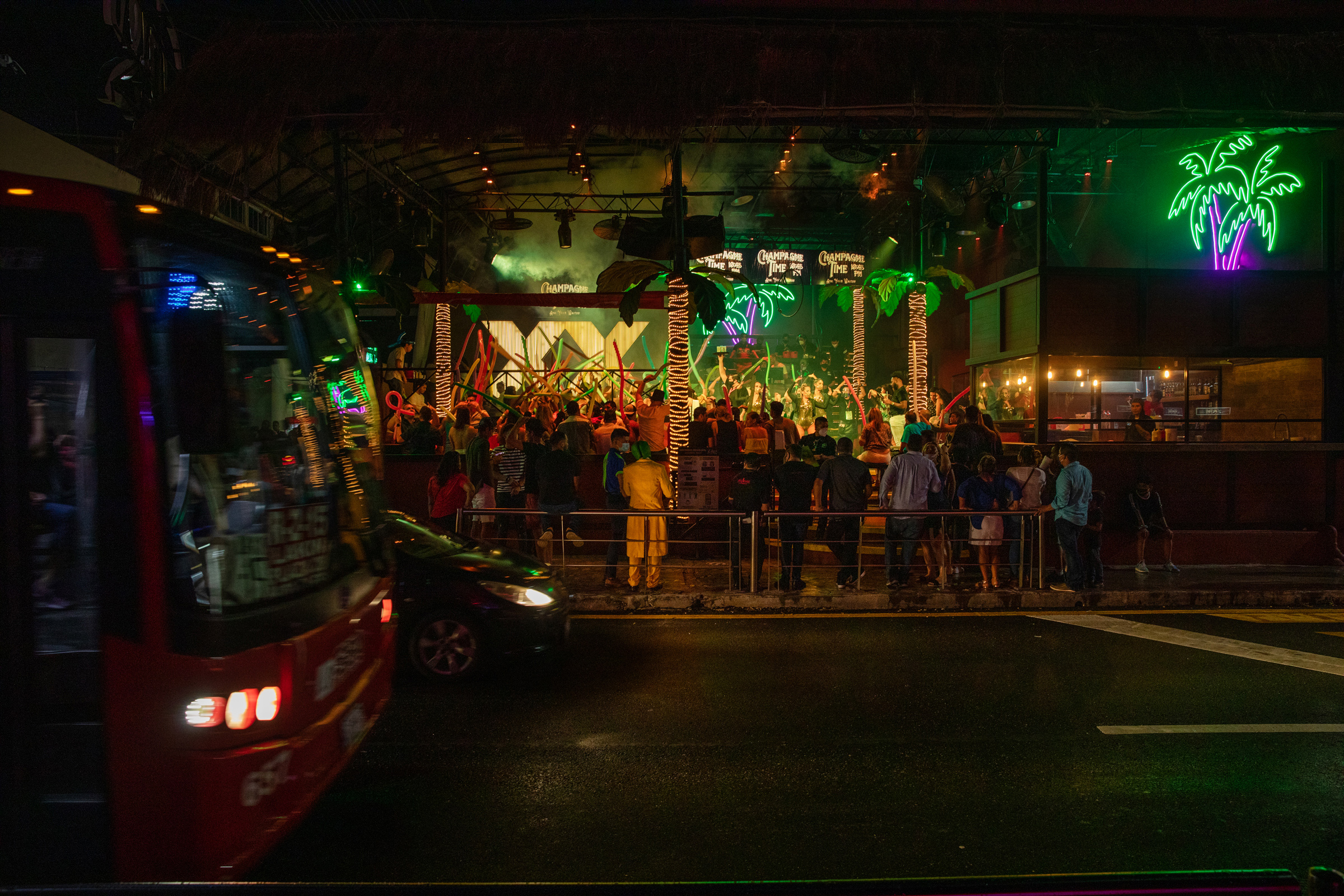
When Mexico imposed nationwide coronavirus restrictions at the end of March, travel to Cancún plummeted: in April, just over 1,000 foreigners arrived at the city’s airport, a drop of 99.8% compared with the same month last year. As foreign travel fell, so did the economy: from February to April, up to 70,000 formal tourism jobs in Quintana Roo disappeared, according to the Mexican Employers’ Association, COPARMEX.
February and April, up to 70,000 formal tourism jobs in Quintana Roo disappeared, according to the Mexican Employers’ Association, COPARMEX.
But with restrictions easing in June, travel has picked back up: in November, the most recent month for which official data is available, nearly 290,000 foreigners arrived in Cancún, well below 2019’s figures but a massive increase when compared with those of April and May. Hotel occupancy in Cancún and nearby Puerto Morelos has also surged from less than 6% in April to 38% in October. Now, after a busy holiday season, many in Cancún have gone back to work. But the influx of foreigners, mostly from the U.S., has also intensified fears around the virus.
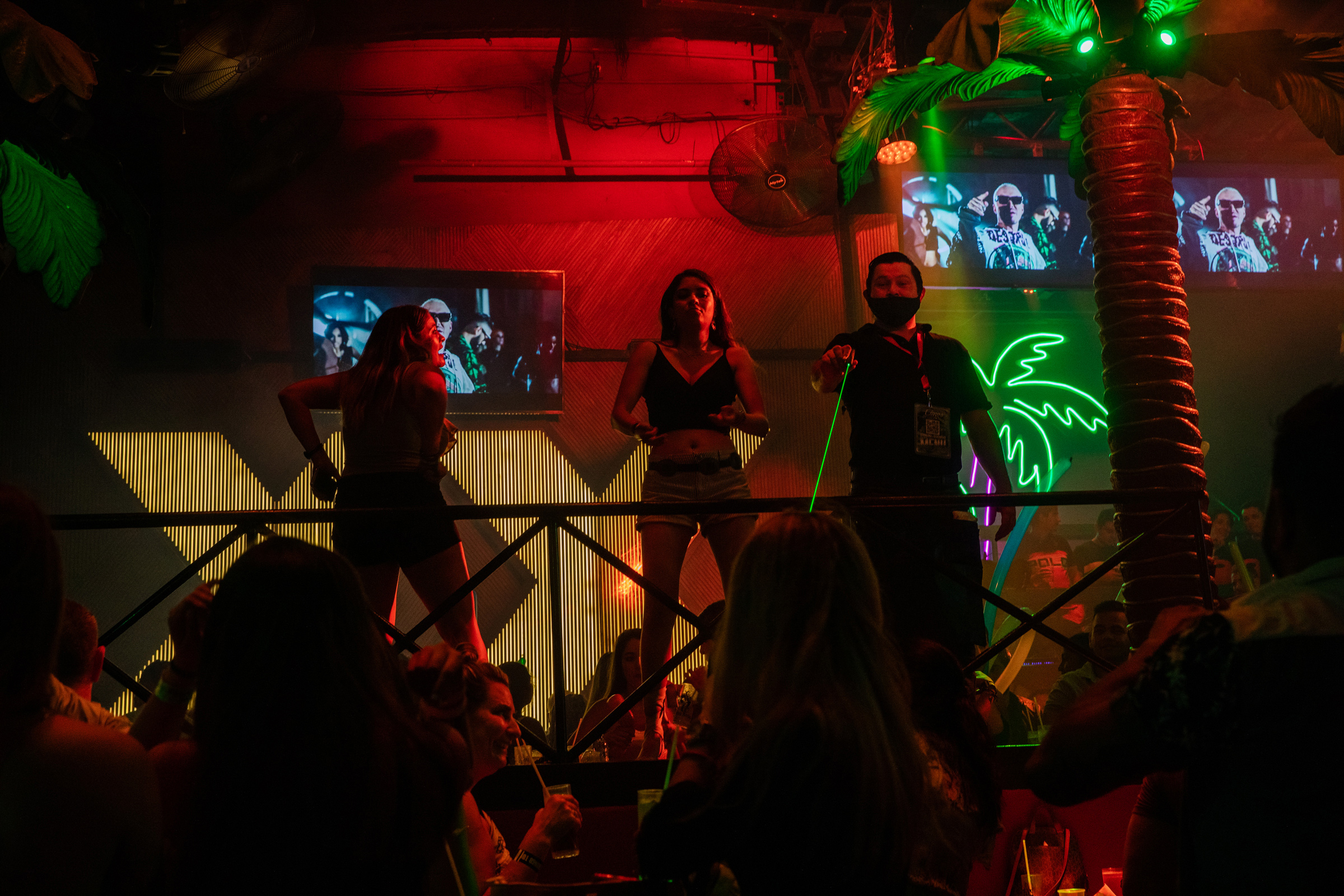
Pablo Garcia has worked for years as a driver shuttling tourists back and forth between the airport and a local five-star hotel. When the pandemic hit Mexico, he didn’t think much of it at first. But as foreign travel began drying up in March, the 52-year-old was laid off. He spent six months out of work, his family barely managing to get by. “There were days when there was nothing to eat,” says Garcia, who lives in a slum on the outskirts of Cancún. “It was really sad and awful to not have [money] for the water bill, for tortillas.”
Some of his fellow drivers were called back to work in July. Then they started getting sick. Five of them died of Covid-19, he says, as did his next-door neighbor and the hotel owner. All six members of his household fell ill, his wife almost died and, in late July, his mother succumbed to the virus. “It was a tremendous blow,” Garcia says. “She was the pillar of the family. We were devastated.”
In October, with foreigners flocking back to Cancún, Garcia was called back to work. Driving tourists around in the close quarters of an airport shuttle may be risky, he admits, but like most workers in Cancún, he has little choice. “I don’t have the luxury of feeling afraid,” he says. “If we don’t work, we don’t eat.”

The story of Cancún is emblematic of cities across Mexico: one of the countries hardest hit by the pandemic, Mexico is facing soaring caseloads, economic distress and a government unwilling to provide meaningful financial aid. More than 1.4 million Mexicans have been infected with COVID-19, according to Johns Hopkins University, and more than 127,000 have died – the fourth highest number of deaths in the world. And the true figures may be far higher: by mid-November, 250,000 more people than usual had died in 2020, government figures show, an excess mortality rate that points to a much heavier death toll.
Official statistics often fail to capture those who avoid going to the hospital, thanks to widespread misinformation and a distrust of authority figures coupled with an ailing healthcare system. “It was widely rumored here that when you arrived at the hospital you would be killed,” says Maria Menina, a Cancún resident who set up a local charity to help those out of work. “We know of entire families who were infected but nobody, nobody, nobody went to hospital.”
And perhaps almost as devastating as the pandemic itself has been the economic aftershock. Economists predicted that Mexico’s economy would contract by up to 9% in 2020, wiping out years of gains for a burgeoning middle class, and potentially pushing some 10 million people into extreme poverty based on income.
And unlike many other countries in Latin America, Mexico has so far refused to craft major stimulus packages or enact meaningful emergency aid. The leftist President Andrés Manuel López Obrador (or AMLO as he’s commonly known) is committed to financial austerity and has instead focused on reopening the economy. “Before the pandemic, the situation was already quite complicated in terms of what could be done policywise to reduce poverty,” says Hector Najera, an economist at National Autonomous University in Mexico City. “With the pandemic and the increases [in poverty] that we’re seeing and the lack of public policy, I don’t see how this fall in wages can be reversed.”
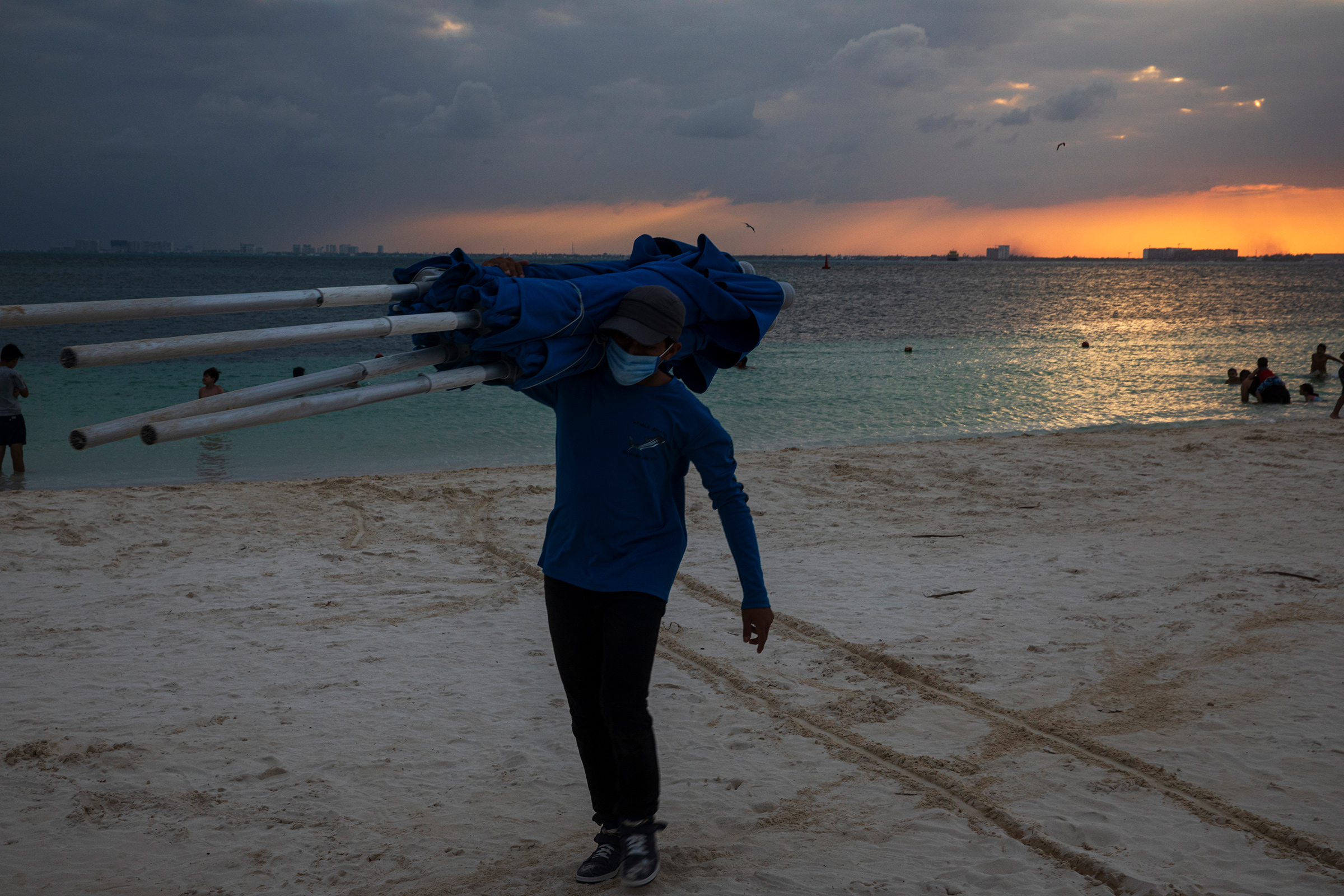
Tourism may be among the industries hardest hit. One of the largest contributors to GDP, tourism accounts for more than 8% of Mexico’s economic output and provides millions of jobs, but as international travel plummets thanks to the pandemic, the industry is in free fall. The sector could see losses worth up to $129 billion, according to the World Travel and Tourism Council, with close to 5 million people expected to lose work, or nearly 70% of the country’s tourism workforce. Mexico, which receives the most visitors of any country in Latin America, is especially vulnerable, with the pandemic still out of control and government aid proving scant.
According to the National Tourism Business Council, the contribution of tourism to Mexico’s GDP could drop by nearly half thanks to the pandemic. “Tourism cannot exist without mobility,” says Braulio Arsuaga, the Council’s president. “These numbers … suggest an enormous challenge for the industry, an enormous challenge for the country.”
Cancún, a city built in 1970 as a tourist destination, is suffering. From January 2020 to November 2020, just 2.8 million foreign visitors arrived at the city’s airport, compared with about 7.1 million during the same period in 2019, a drop of over 60%. “The situation is still very sad here in Quintana Roo,” says Menina, the charity worker. “The hotels aren’t working at 100% capacity … so they have very little personnel. Many people are permanently unemployed.”
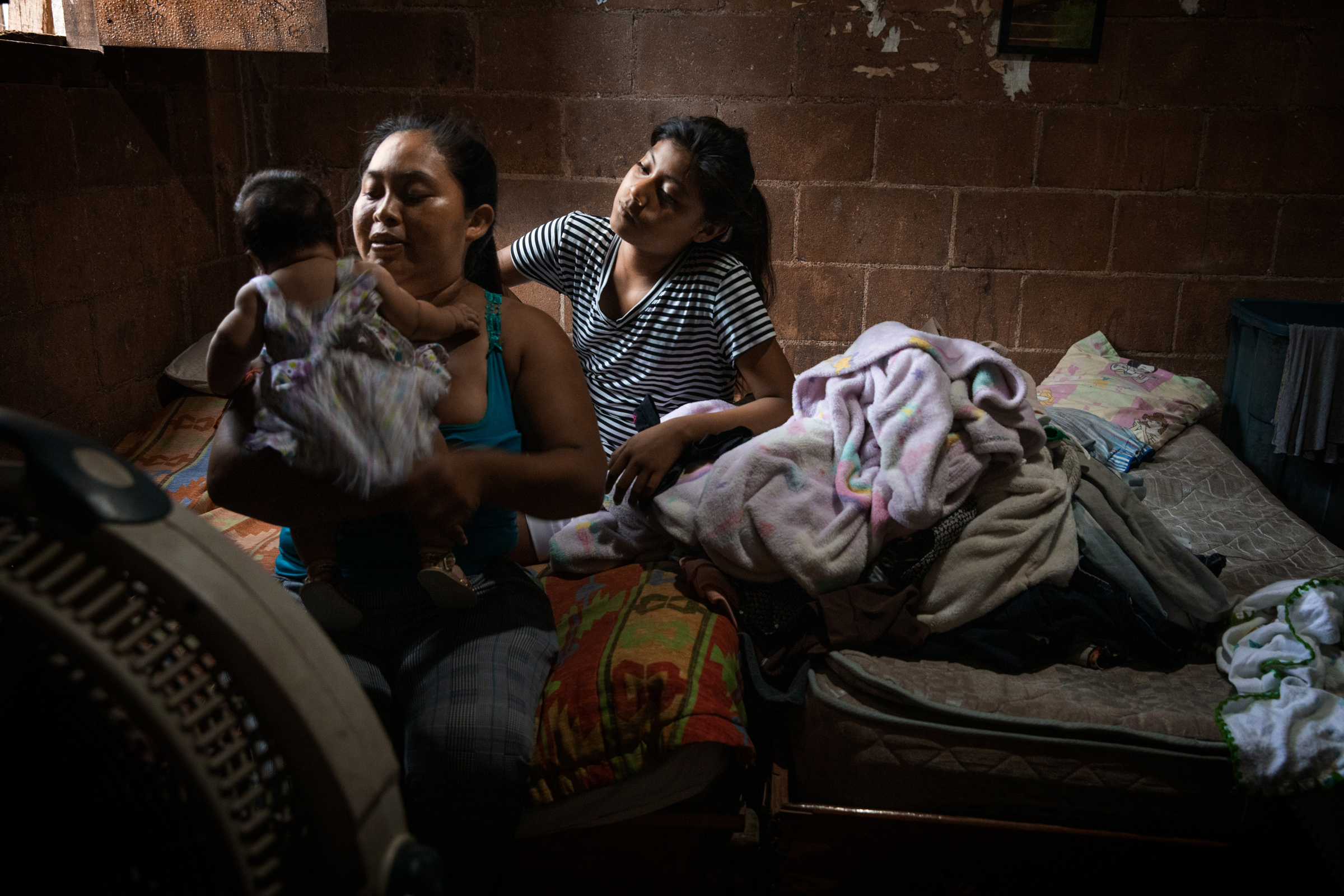
With its all-inclusive resorts, its spring break decadence and its postcard-perfect beaches, Cancún is synonymous with the good life for most Americans. But for thousands of poor and Indigenous Mexicans from nearby rural states, the city has been a powerful magnet for finding work: according to a 2013 study from Mexico’s National Population Council, more than half of Quintana Roo’s inhabitants are migrants from elsewhere in Mexico. The city and its flow of tourist dollars provide income for hundreds of thousands of workers, who often support entire families in their home states.
Among them is Maria Jimenez, 27, who grew up in an Indigenous Tzotzil family in nearby Chiapas state, among Mexico’s poorest. One of 13 children, Jimenez dreamed of becoming a human rights lawyer to help fight the injustices she saw in her community growing up. But when she turned 15, her parents said they could no longer support her and tried to take her out of school. So like many young people across southern Mexico, Jimenez escaped to Cancún in search of work and, eventually, an education. “I wanted to be somebody,” Jimenez recalls.

But once in Cancún, life got in the way. The long hours working as a cleaner and then in a spa didn’t leave much time for school, and after a few years she became pregnant with her first child. A second followed soon after. Still, Jimenez enjoyed working in the tourism industry, especially learning English from guests. “I like seeing people happy,” she says.
In 2019, she got a job in the restaurant of a large hotel as a busser, earning about $37 a week plus tips. She’d gone back to school as well, with just five subjects left to finish her high school diploma. At the start of 2020, the hotel said they were going to promote her to server. “This was going to be my lucky year,” she says. “Then everything falls apart.”
At the end of March, as Mexico declared a health emergency to slow the spread of the virus, Jimenez was let go. She began selling desserts from home to make ends meet, but soon after, she was evicted. In the middle of a pandemic, the single mother had to find a new place to live. To pay the security deposit, she sold her fridge. “I was drowning,” Jimenez says. “I lost hope.”
On a Friday morning in October, TIME met Jimenez standing in line outside a local charity waiting for a food parcel to help feed her children. Finally she’d had some good news: her old job had called her back to start work. She would be going back to bussing, but it was something. “I’m very excited that I’m going to have an income,” she says.
Still, the shadow of the illness that took two of her uncles hangs over her. “I feel a bit of relief, and at the same time, I have two kids,” she says. “It worries me … If I get sick, what’s going to happen to them?”
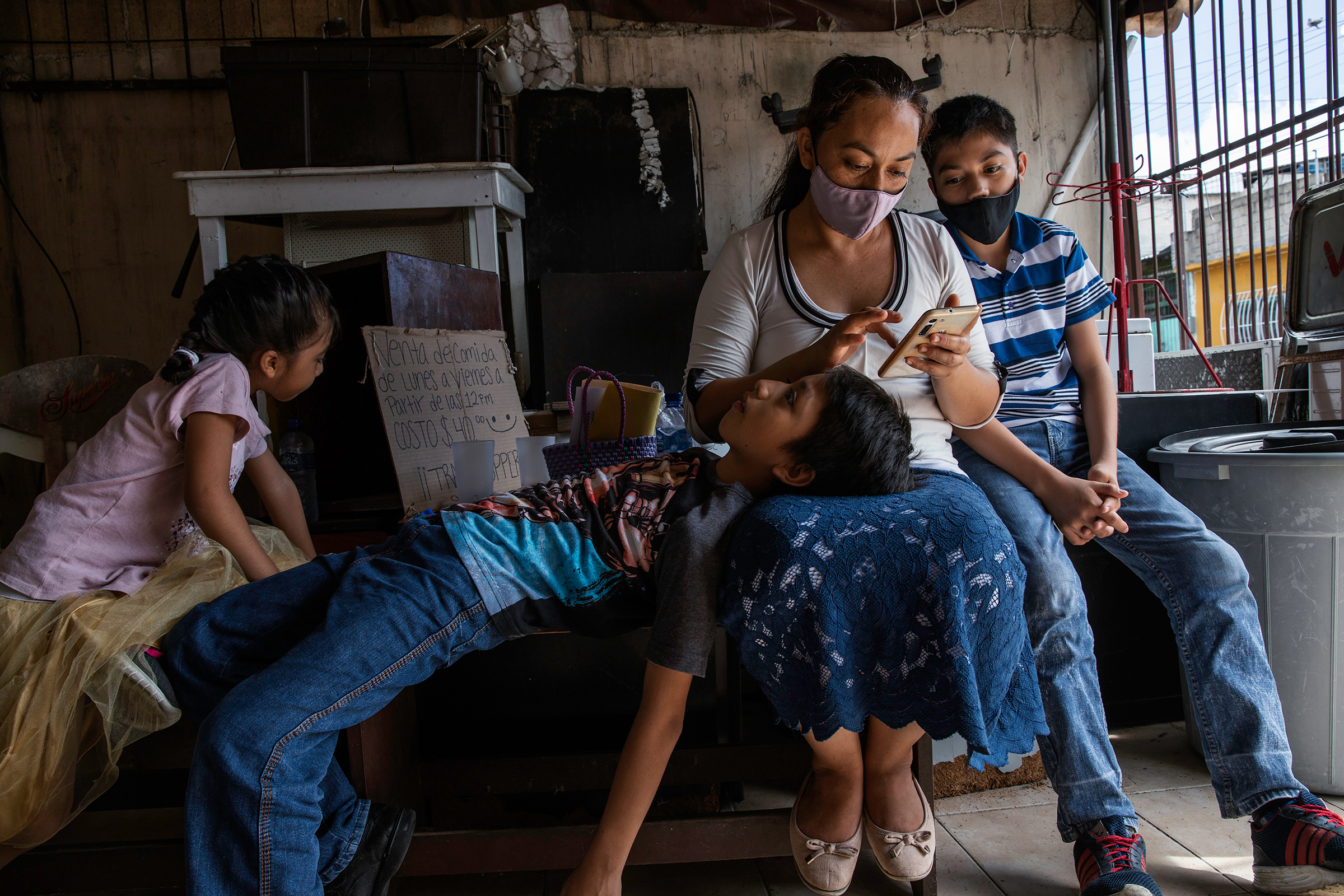
The fear of contracting COVID-19 is commonly voiced among Cancún’s tourism workers—particularly the risk posed by Americans, who made up 82% of international arrivals to the city in November, and are traveling from a country where the virus is infecting more than 200,000 people a day. The contagion can also go both ways: in nearby Tulum, a five-day festival became a superspreader event, with revelers dancing in the hundreds inside underground caves, some of them reportedly bringing the virus back to the U.S. Following an uptick in cases in early December, the governor of Quintana Roo issued a statewide mask mandate, and urged residents not to hold parties or gatherings in the holiday period.
Angie Robert, 22, lost her job at Hooters when the pandemic started, but found work as a shop manager inside one of the city’s all-inclusive resorts in July. At the time, masks weren’t required for guests, and few people wore them. Soon, her colleagues started getting sick. “The ambulance would come and take away the workers,” she tells me as she waits at a bus stop looking exhausted after a long shift. “I was scared thinking I would be next.”
Since then, Robert says the hotel put a mask mandate in place and now almost everyone wears one. Her colleagues aren’t getting sick anymore, but Robert is still worried. “We all know that if you get infected, you’re going to be left without work,” she says.
Many visitors remain relatively unconcerned. In my hotel one morning, an American woman in her 60s walked into the tiny elevator, saw my own mask and made a half-hearted effort to put on her own. “I hate these things,” she says. Later that night at a convenience store, I watched a young American guy buy two packets of instant noodles, using the collar of his tank top to half cover his nose and mouth.

On a lively Saturday evening, an American newlywed couple were walking home to their hotel through the crowded nightlife district. Zade and his wife Suzanne, who declined to give their last names, weren’t wearing masks, but insisted they always wore them indoors. Zade’s sister works as an ER nurse in New York City, so at first he’d been afraid of the virus, particularly for his parents. But after spending months in lockdown, he’d had enough. “There’s a point where it’s like, How long do you live with something like this?” he says. “If something is going to happen to me, it’s going to happen to me.”
Such carefree attitudes cause frequent frustration among Cancún’s workers, but for a city that depends almost entirely on tourist dollars, the risk posed by maskless Americans is a necessary one. “We live day-to-day,” says Garcia, the driver. “We live from tourism.”
Back outside the Coco Bongo, 38-year-old Omar was wearing a mask of a different kind. Along with about half a dozen other young men, Omar, who asked that his last name be omitted, works as a Jim Carey impersonator, donning a lurid green mask and a canary yellow suit to pose for photos with tourists.
Omar stopped working in March when the pandemic struck, and had been back at work for only two weeks. Business was still slow, and he worried about feeding his wife and two children. But as far as the risk posed by the coronavirus, he simply shrugged. “If I don’t die of COVID, I’m going to die of hunger.”
Claudia Guadarrama is a photographer based in Mexico. Her work is supported and produced by the Magnum Foundation, with a grant from the Henry Luce Foundation.
More Must-Reads from TIME
- Cybersecurity Experts Are Sounding the Alarm on DOGE
- Meet the 2025 Women of the Year
- The Harsh Truth About Disability Inclusion
- Why Do More Young Adults Have Cancer?
- Colman Domingo Leads With Radical Love
- How to Get Better at Doing Things Alone
- Michelle Zauner Stares Down the Darkness
Contact us at letters@time.com
